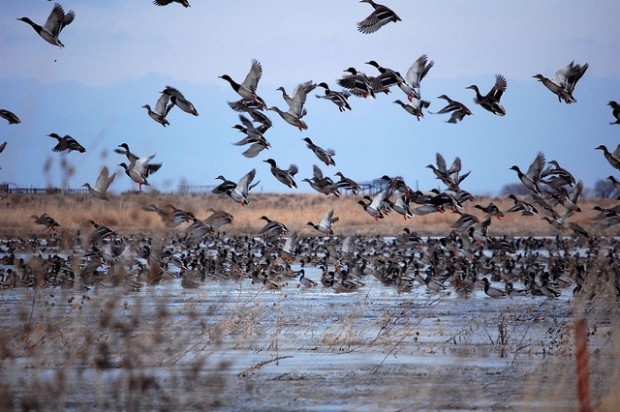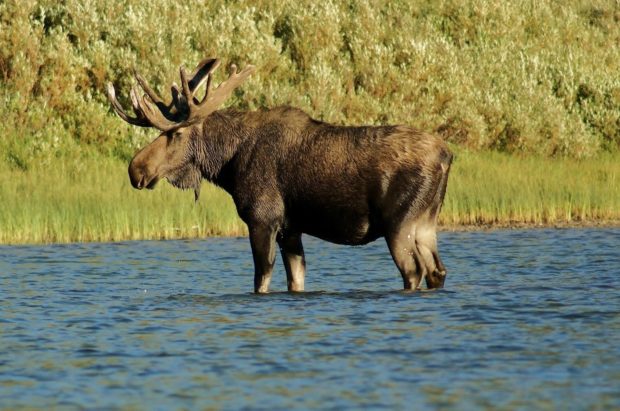We have much more to do and your continued support is needed now more than ever.
Why Wildlife is Cheering for the Clean Power Plan
President Obama has taken a historic and ambitious step in the fight against carbon pollution that threatens wildlife. With the announcement of the finalized Clean Power Plan, the President has enacted the first ever rules designed to reduce harmful greenhouse gas emissions from power plants. Power plants comprise about 40% of the nation’s emissions.

An Improved Plan for Tackling Climate Change
The final rule has some noted improvements over a proposed rule issued last year. For one, the final rule has a more ambitious target for overall emissions reductions, set at 32% by 2030. Also, the EPA listened to the countless voices who called for more emphasis on renewable energy.
Building on the soaring growth of clean sources of energy like wind and solar, the final rule has incentives and goals that are projected to result in an increase in renewable power generation from 22% to 28%. This is extremely welcome news.
The EPA has also included changes to give states even more latitude in terms of achieving compliance by moving back the compliance date and allowing states more time if they have reliability concerns. But compliance should not be a problem as more than half of states are already on track to meet the proposed rule’s 2020 benchmarks for reducing carbon pollution, with 14 of those states on track to exceed those benchmarks.
We Need to Act to Protect Wildlife
These measures come none too soon. The first five months of 2015 were the hottest on record, on pace to surpass 2014’s record year. A recent study published in the journal Nature finds an increasingly visible link between global warming and extreme weather, with warmer temperatures adding fuel to superstorms like Sandy.
Climate change poses a direct threat to wildlife and communities. If carbon pollution continues unabated, scientists predict that higher temperatures will lead to extinction of 50% of species around the globe.
Here are four species that are cheering about the President’s Clean Power Plan:
Ducks

Climate change will bringer warmer, dryer weather that will significantly reduce the number and quality of these breeding ponds. Without action, like the Clean Power Plan, duck hunters may soon be asking, “Where did all the ducks go?”
Brook Trout

For instance, in Virginia, where brook trout are the official state fish, recent climate modeling suggests brook trout could be gone from the state by mid-century. The Clean Power Plan is a big step in the right direction to ensuring brook trout will keep swimming in our streams.
Moose

Heat is already taking a toll on moose. In addition to heat stress, warming temperatures are allowing parasitic ticks to flourish, and tens of thousands of ticks can attach themselves to moose, literally sucking the life out of them. The results are high fatalities particularly in juvenile moose. In the last 25 years, one of Minnesota’s moose populations has plummeted from 4,000 to fewer than 100. Declines are also being seen in Maine and New Hampshire.
Without action like the Clean Power Plan, it is likely that moose populations will largely be driven out of the lower 48 states.
Loons

While we can choose not to eat fish – a choice we shouldn’t have to make – wildlife can’t. Wildlife, like loons, that survive on fish in our lakes have no choice but to eat contaminated fish. A recent report found that 75% of loons in once pristine Adirondack lakes far from coal plants had mercury levels that posed high to moderate risks.
Mercury is so toxic, that 1/70th of teaspoon to the make the fish in a 25 acre lake unsafe to eat. As the Clean Power Plan powers down mercury spewing coal and powers up renewables, EPA estimates that the Clean Power Plan will remove thousands of pounds of mercury from the environment. That’s good news for both people and loons who like to eat the fish they catch.
What’s Next?
Now it’s up to states to craft implementation plans to ensure the Clean Power Plan’s goals are realized. If states fail to act, the EPA will implement a federal plan on the state’s behalf. However, the plan is designed to make implementation easy for states. As National Wildlife Federation’s President and CEO Collin O’Mara explains:
The President has provided states with the flexibility necessary to achieve meaningful reductions in a way that unleashes American innovation to maximize benefits and strengthen the economy. From the Northeast’s Regional Greenhouse Gas Initiative to California’s carbon trading system, state-based and regional limits on industrial carbon pollution are proven effective at both cutting pollution and creating jobs.
There’s still a lot of work to do. But the President has taken a huge step towards reducing carbon pollution and has set the stage for further national and international action to keep ducks, trout, moose and loons a thriving part of our children’s future.
![]() Urge Congress to stand strong for wildlife and climate action!
Urge Congress to stand strong for wildlife and climate action!






















